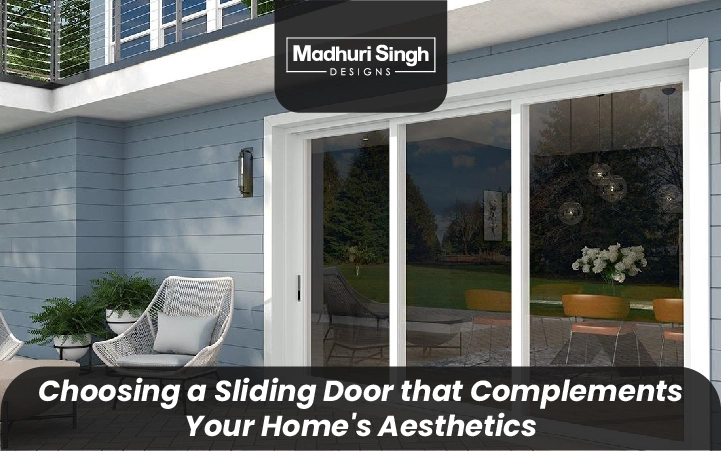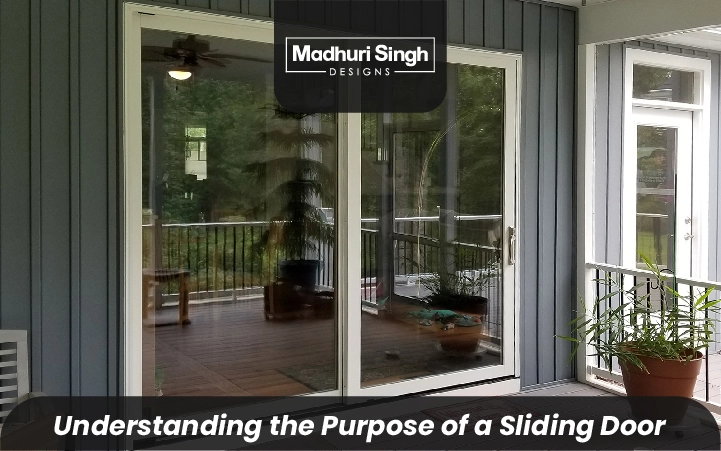In addition to being practical, Interior Sliding Doors give every house a touch of class and sophistication. They create smooth transitions between indoor and outdoor areas, let in lots of natural light, and offer expansive panoramas of the surroundings. The right Interior Sliding Door is essential for aesthetic appeal and usefulness, whether you want to replace an old door or include them in a new building project.
We will walk you through the process of choosing the ideal Sliding Door For Wardrobe or home in this article. We’ll look at several things to take into account, including the door’s function, the available space, the materials, the glass alternatives, the style, the security measures, the energy efficiency, maintenance, and installation. By the time you’re done, you’ll have the information you need to make an informed choice and locate a sliding door that suits your demands and the aesthetic of your home.
Prepare to start a transformation of your living area with a tastefully selected Interior Sliding Door that will improve the ambiance of your house as a whole.
Understanding the Purpose of a Sliding Door
Understanding the particular demands and requirements for installing a sliding door in your home is crucial before looking into the numerous possibilities. To evaluate the use and functionality you anticipate for your sliding door, take into account the following factors:
1. Will the Interior Sliding Door provide access to a patio, deck, or garden that is outside? Or is its main purpose the division of interior rooms in your house?
2. Do you want to maximize the amount of natural light that enters your home? What about views? Are you looking for sweeping views of your surroundings, such as a lovely backyard, a lovely setting, or the ocean?
3. Is the use of available space a top priority? Given that they don’t swing open as conventional hinged doors do, Interior Sliding Doors are a great choice for spaces with little available floor space.
4. Do you want your living spaces to have better ventilation and airflow? When it comes to letting fresh air into your house, sliding doors might be a practical choice.
6. By carefully taking into account these variables, you’ll be able to ascertain the main function and intended functionality of your sliding door, which will help you make an informed selection when choosing the appropriate kind and features.
Glass Options
The type of glass that will be used is one of the most important factors to take into account when selecting a Glass Sliding Goors Glass has a significant impact on the overall aesthetics as well as privacy, energy efficiency, and even sound insulation. Consider the following glass options:
Clear Glass
Clear glass is a popular choice since it lets the most natural light into your home, creating an airy, bright environment. However, keep in mind that clear glass offers minimal privacy, especially during nighttime when interior lighting can be seen from outside.
Frosted or concealed glass
Frosted or concealed glass should be considered if privacy is an issue. The surface of this kind of glass is textured or etched, making it opaque while still allowing light to penetrate through. For areas where seclusion is sought, such as restrooms and bedrooms, frosted glass is a great choice.
Tinted Glass
Tinted glass can offer both more privacy and lessened sun glare. It is available in a variety of colors, such as bronze, grey, or blue, which not only increase privacy but also give your Glass Sliding Door a fashionable touch. Additionally reducing solar heat gain, tinted glass promotes energy efficiency.
Low-E Glass
Low-E glass is coated with a thin, transparent coating that reflects heat radiation. The Glass Sliding Door helps in keeping your home warmer in the winter and cooler in the summer. The excellent energy efficiency of this kind of glass prevents heat transfer and may result in cheaper energy costs. For areas with harsh climates, low-E glass is a great option.
Double or Triple Glazing
Multiple layers of glass are separated by an insulating gas, such as argon or krypton, in double or triple glazing. This design improves energy efficiency and sound insulation, minimizing outside noise transfer. Particularly advantageous are regions with loud noise levels or severe weather.

Choosing a Sliding Door that Complements Your Home’s Aesthetics
It’s important to take into account the style and design that will complement your home’s current architecture and interior decor when choosing an Interior Sliding Door. Making the appropriate decision can improve your living space’s appearance as a whole. When it comes to style and design, keep the following in mind:
Sliding doors can be found in a variety of materials, such as wood, aluminum, vinyl, or fiberglass. Each substance has distinct qualities and aesthetics. For instance, aluminum frames have a sleek, contemporary design, whilst oak frames have a warm, natural appearance. Pick a material that complements the architectural and interior design preferences of your property.Frame Colour, The Interior Sliding Doors frame color has a big impact on how your room looks as a whole. Think about whether you want the frame color to stand out or perfectly complement your current decor. Classic white, black, metallic coatings, and wood treatments that resemble real wood are all popular choices.
- Hardware and Accessories, Pay close attention to the sliding door’s hardware and accessories. Hinges, handles, and locks can all lend a little flair and practicality. Select the hardware that blends in with the sliding door’s overall style and finish.
Grid Patterns, The glass panels of the sliding door may be covered with grid patterns, commonly referred to as muntins or grilles. Depending on the design, they might produce a conventional or contemporary appearance. Think about whether you want a door with grids or whether you would rather have a clear, unobstructed view with few obstacles.Customization Possibilities, Some producers provide you the chance to modify the sliding door’s appearance to suit your tastes. Choosing the quantity, sizes, and configurations of the panels may fall under this category. You can get a distinctive and individualized design for your sliding door with the aid of customization.
Conclusion
Selecting the ideal sliding door for your house requires consideration of both practicality and beauty. You may determine the use and functionality you anticipate from your sliding door by evaluating your needs while taking into account elements like indoor/outdoor access, natural light, space optimisation, and accessibility. From there, you can investigate several glass alternatives that balance privacy and energy efficiency.
Accept the transformation that a well-chosen Interior Sliding Doors provides, bringing light, nature, and smooth transitions into your home. Enjoy your new sliding door’s elegance and usefulness as you make it a focal point of your house for years to come.
FAQs
Qus: What benefits will having a sliding door installed in my house bring?
Ans: Increased natural light, simple access to outdoor areas, space savings over hinged doors, and a smooth transition between interior and outdoor spaces are just a few advantages of a sliding door. Sliding doors can also raise the value of your property and its visual appeal.
Qus: How can I figure out what size my sliding door should be?
Ans: Measure the width and height of the opening where the sliding door will be installed to determine the ideal size. To guarantee a correct fit, it’s essential to measure precisely. Consult a qualified installer who can help you choose the right measurements if you’re unsure or have complicated requirements.
Qus: What kind of material makes the best sliding doors?
Ans: Your preferences, financial situation, and home’s design will all influence the material you choose. Aluminium, vinyl, fibreglass, and wood are typical sliding door materials. Aluminium has a sleek and sophisticated aspect, whereas wood has a warm and traditional appeal. Fibreglass and vinyl are both resilient and low-maintenance materials. When selecting the ideal material, take into account elements like appearance, toughness, energy efficiency, and maintenance needs.
Qus: Should I pay a professional to install a sliding door, or can I do it myself?
Ans: It’s normally advised to engage a professional installer, even if some homeowners may be able to install a sliding door themselves. Optimal performance, security, and energy efficiency depend on proper installation. The skills, equipment, and understanding required for accurate and effective installation are all available from a professional installer.


